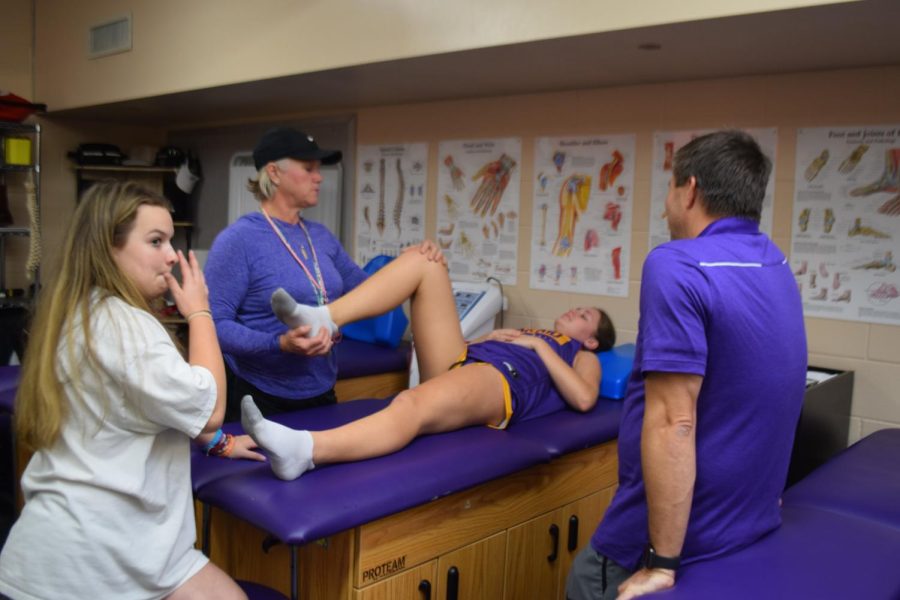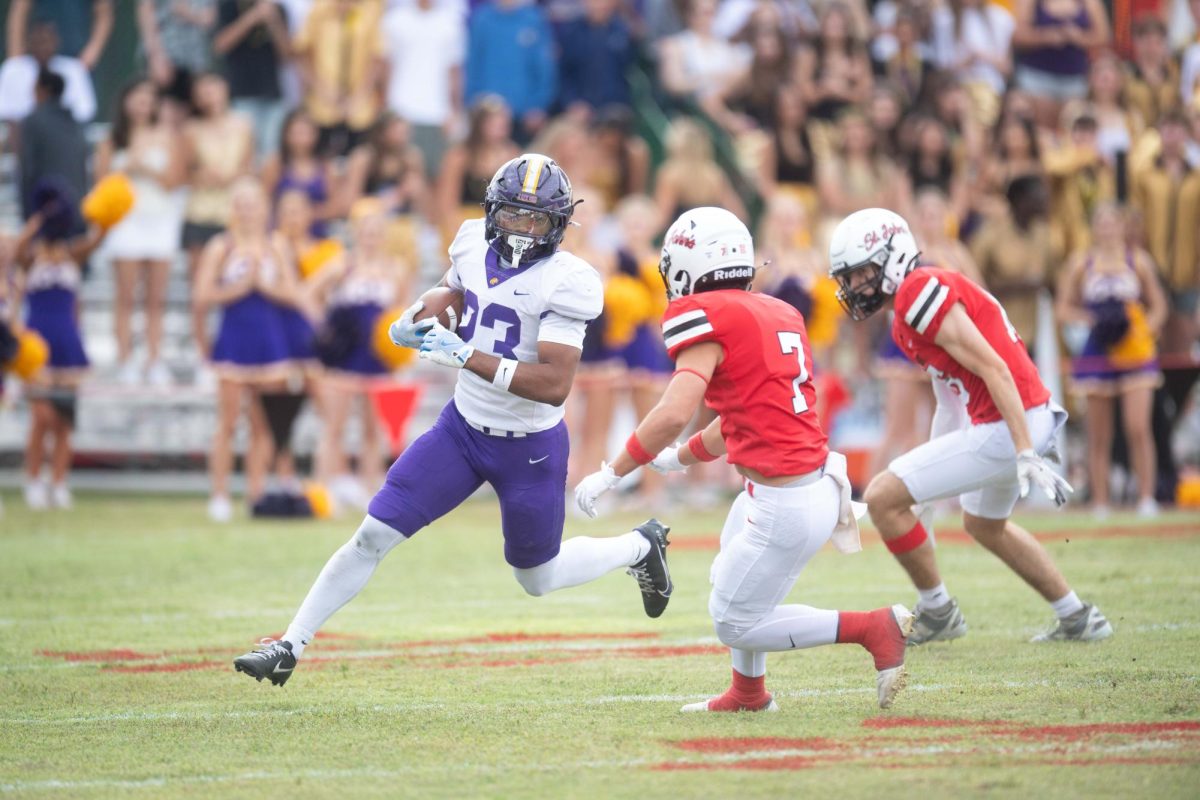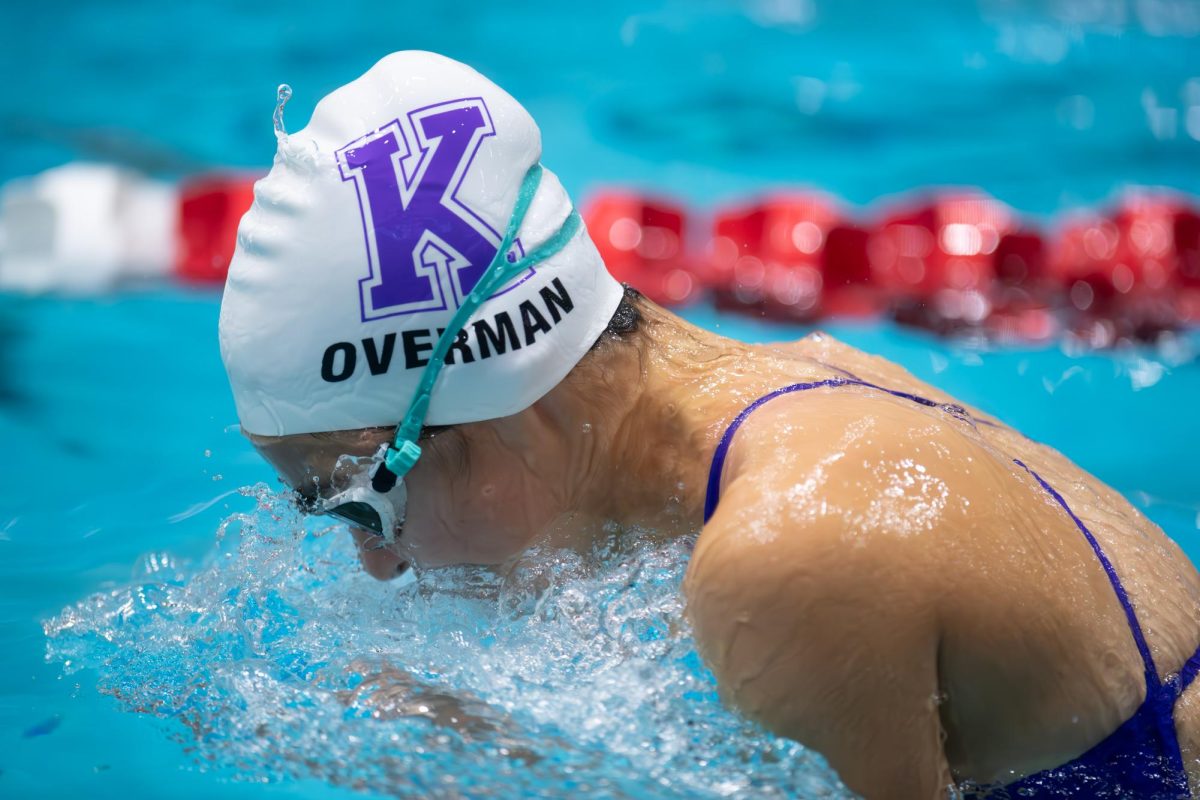Sports credits’ pros and cons lead to conflicted students
Sophomore Marisa Boué enjoys shadowing the athletic trainer.
December 6, 2022
With countless awards adorning the walls of the athletic facilities, students practicing on various fields throughout the day, and sports stickers decorating almost every locker, it is clear that athletics is a priority at Kinkaid.
Behind all of that pomp and circumstance is a demanding sports credit system.
Requiring a minimum of six credits over the course of four years, many students find it difficult to balance the high demand of sports participation alongside Kinkaid’s rigorous curriculum.
“The amount of time I have to put into my sports can make it really hard to maintain my grades,” Riley Purdy, a freshman, said. “No matter how much I love athletics, the time commitment can be really stressful and at times not worth it.”
In light of this, however, students express little interest in changing the system’s requirements.
In part, this is due to mental and physical benefits.
“I think that while I lose some time doing sports,” Abby Woo, a sophomore, said. “I find that I feel much happier and healthier than during off-season.”
Participation in regular physical activity can reduce anxiety and improve brain health for adults and adolescents, per a study released by the Center for Disease Control and Prevention. In terms of physical health, exercise also limits health risks while also strengthening muscles and bones.
Due to the requirements of the sports credit system being so high, Kinkaid has created alternative ways to gain a credit for other time-consuming activities without participating on sports teams.
These commitments—such as the Upper School musical, managing a sports team, or shadowing the athletic trainer—are fun and unique alternatives to physical activity in order to gain a credit.
“I love being able to work with the trainer,” said sophomore Marissa Boué, a student trainer. “I’m able to learn more about a type of career that I might want to pursue in the future, and I get first-hand experience of what that type of job would be like.”
As a result of the credit system encouraging participation in more than one sport, students are able to branch out to other students under a common interest.
Sharing joy through achievements and disappointment through losses, students enrolled in sports are able to create new friendships with their peers outside of their grade. A study done by the University of Florida documents that participation in team sports prompts adolescents into making positive, lasting friendships and allows them to learn responsible social behaviors.
“Before I met one of my best friends, there was almost no opportunity to get to know her because we had no classes together,” Woo said. “But then during softball we started to talk and it was easy to become great friends because we already had something in common.”
On the surface, the sports credit may seem like a lot to manage alongside a challenging academic program, however, the system allows students to develop social and physical skills that will be beneficial throughout their futures.
“We give our students the whole high school experience from academics to the arts to athletics.” said Mr. David Holm, director of athletics. “Our sports credit system shows that as a school we value physical activity, fitness and being a part of a team.”












